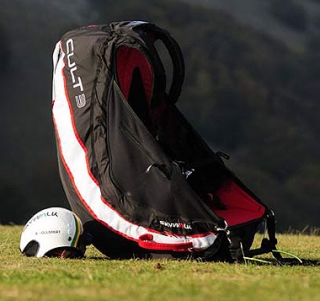
Today, more and more people are taking up paragliding across the world. To better understand this marvellous sport, we’ll explore its history, its key components, and its current practice as an adventure sport.
History of Paragliding
In 1978, a group of French skydivers began training for precision landings by launching from the steepest slopes of Mieussy in France, rather than paying for aeroplane lifts. This not only proved effective but also sparked a transformation. Gradually, they shifted focus from their original goal and started aiming to stay airborne longer.

In pursuit of better glide performance, the first modifications to parachutes were made. When mountaineers realised a parachute that fits in a rucksack could launch from any summit, they quickly incorporated it into expeditions. Thus, paragliding evolved from a skydiving experiment to a highly sought-after activity, first among mountaineers and later for free flight enthusiasts.

Manufacturers of parachutes, windsurfing gear, hang gliders, and mountain gear began producing thousands of paragliders, steadily improving aerodynamics, performance, glide, and safety. Competitions and record attempts soon followed—first for duration (5h20 in 1985, 11h25 in 1988), then distance (75km in 1990, 355km in 1998).
Today, this aerial sport is practised worldwide and has become a straightforward and relatively popular form of flight.
Parts of a Paraglider
Harnessing aerodynamic forces and atmospheric updrafts to climb, stay aloft, and manoeuvre, the paraglider firmly belongs to the family of ultralight gliders.
A paraglider is a simple aircraft composed of three main parts:
- Wing (or canopy), corresponding to the upper sail
- Suspension lines, which connect the wing to the pilot
- Harness, resembling a seat
As a glider, a paraglider flies neither by being lighter than air (like hot-air balloons) nor with an engine (like aeroplanes or paramotors). It stays airborne thanks to gravity and the carefully designed wing shape, which enables engine-free gliding.
- Wing. There are several types of paraglider wings, but all share the same basic elements. Made from nylon or polyester coated with polyurethane or silicone to protect against UV rays, their design includes strategically placed and reinforced sections for durability and aerodynamics. Key parts include the extrados, intrados, leading edge, trailing edge, stabiliser, ribs, cells, and openings.

- Suspension Lines. These connect the pilot to the wing. Hundreds of metres of thin, durable cords—called "suspension lines"—are arranged in a branched pattern. Their length (typically 6 to 9 metres) determines the pilot’s distance from the wing. The lines branch into 2, 3, or even 4 vertical tiers, engineered to withstand up to 8 times the total weight (wing + equipped pilot). Materials include polyester, polyethylene, Vectran, and other hydrocarbon derivatives.

- Harness. The pilot flies seated in a comfortable chair—a highly sophisticated harness. Designs range from early lightweight models (similar to climbing harnesses) to modern bulkier versions with safety features like integrated emergency parachutes, inflatable or foam back protectors, and a sturdy seat board. These ergonomic, streamlined harnesses include adjustable straps, pockets for radios/gear, and more.

Paragliding Today
Today, paragliding is a mainstream activity worldwide. Many regions thrive on paragliding tourism due to ideal flying conditions in valleys, mountains, beaches, and other scenic spots. For pilots, the beauty of nature is a major draw, alongside competitions and the relentless pursuit of records.

No prior experience is needed—you can fly as a passenger in tandem with a certified pilot. Choose a licensed school to ensure safety and expertise.

To learn paragliding, rest assured it’s an accessible extreme sport. Numerous schools offer the training and practice required to master this gliding art.
After this detailed overview, you’ll grasp how technical yet simple paragliding is—and the thrilling experience it offers!
Try a tandem flight if you’re new, or enrol in a course to delve deeper into this incredible aircraft!












